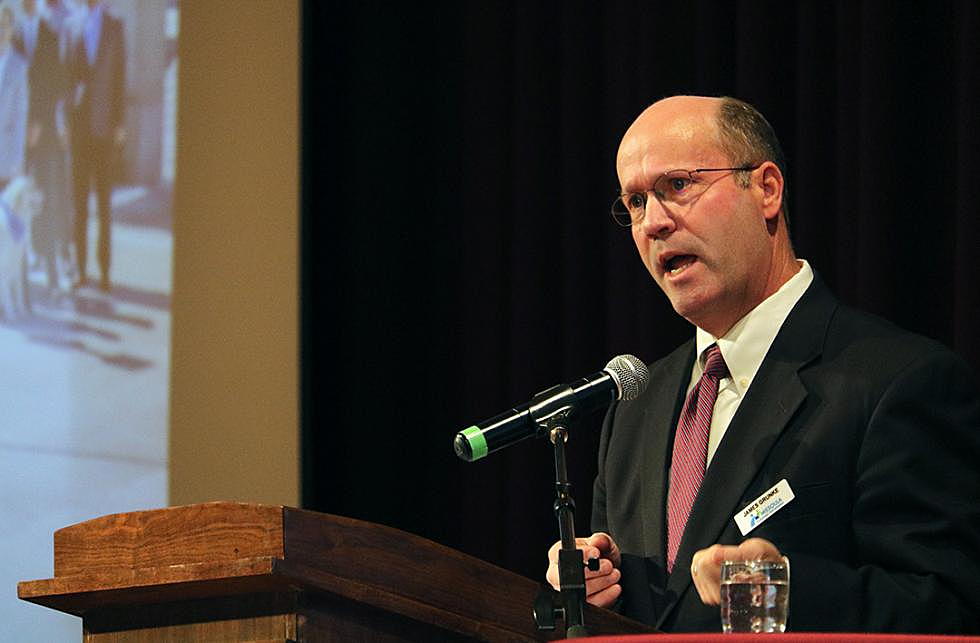
Workforce study finds challenges, opportunities in growing Missoula’s economy
Over a two-year span ending in 2016, businesses flourished across the greater Missoula area, enjoying a $524 million increase in sales and growth in total employment. Now, the pool of skilled workers is running dry, presenting barriers to economic progress.
On Tuesday, the Missoula Economic Partnership unveiled its State of the Workforce Study, capping a six-month review of the city's employment sector and the barriers that hinder growth. While Missoula has a number of factors playing in its favor, including quality of life and an educated workforce, it also faces challenges, from low wages to a high cost of living.
And those challenges are proving heavy when it comes to recruiting and keeping talented workers.
“We want to have specific, actionable items to address our workforce needs,” said James Grunke, president and CEO of MEP. “We all know there's a workforce problem, but what are we going to do to solve it?”
MEP and its partners contracted Thomas P. Miller and Associates earlier this year to take a deeper look at the challenges facing workforce development and why so many Missoula businesses are struggling to fill empty jobs.
The issues identified in the study are powerful and intertwined, from the effects of a low unemployment rate to the city's slow population growth. At the same time, the number of available jobs are growing, forcing employers to fill vacancies from a shrinking pool of applicants.
“The employers' search for talent has intensified throughout Missoula and the length of time needed to find qualified candidates for those jobs has increased,” said Nate Klinck, vice president of Miller and Associates. “There's a great amount of jobs available, but the talent to fill them is currently limited.”
The reasons behind the challenges are telling, but they're not new. According to the study, the city's population growth slowed from 1.3 percent in 2015 to .68 percent in 2016. At that time, the price of a median home surged to $239,000 and now stands north of $270,000.
Combined with an average annual income well below the national average, the factors add up, limiting efforts to recruit and retain skilled workers, including those produced by Missoula's greatest pipeline of talent at the University of Montana.
Paying the so-called “mountain tax” or “pine cone tax” has become a beloved yet disparaging adage about living in Missoula, where a number of workers forgo a competitive wage in order to enjoy the city's quality of life.
“A significant challenge is that the cost of living is very high,” said Klinck. “When you look at Missoula compared with other communities, you find that it's higher than the U.S. average and Montana as an average.”
The disparity between wages and housing costs has led to an outward migration of residents while slowing population growth, both of which have hindered efforts to recruit and retain skilled workers. It may also hurt the city's ability to attract new businesses, further limiting economic growth.
“You have high cost of living, high cost of housing and low average salaries, and that creates a major gap that can really cause challenges in attracting talent,” Klinck said. “You have a high number of graduates leaving UM right now that quite simply can't afford an entry level house within Missoula.”
Despite the challenges, Klinck said, the study found areas of success, ranging from quality of life to an abundance of workforce training programs. The study identified more than 1,100 unique training programs available to local residents looking to advance their career or land a better-paying job.
The city is also home to a highly educated workforce, where the number of residents holding a college degree exceeds the national average. Klinck said the factors present areas of opportunity, so long as the city's many sectors, including businesses, government and education, can align their strategies and find ways to capitalize on Missoula's attributes.
“Through this, there can be a really strong entrepreneurial system based upon the number of highly educated and skilled individuals,” Klinck said. “There are a significant number of opportunities throughout Missoula for individuals to increase their skills and education. Coupled with the presence of Missoula College and UM, it puts the area in a great position to advance the talent development.”
As a result of the study, MEP and other community stakeholders have identified four goals to address the challenges facing the city's workforce.
Among them, they look to establish Missoula as a premier destination for diverse talent and opportunity, and to develop career pathways for students at all levels, including K-12, college and adult education.
They also look to grow the resources available to employers to develop workforce talent, and to position MEP as a hub for workforce development. Those strategies will be fleshed out in the months ahead.
“Throughout the study, we really focused on three areas – talent attraction, talent development and talent retention,” Klinck said. “We believe those three things working together will ultimately create and maintain that skilled workforce for Missoula's employers.
"With this proactive approach and collaborate approach, we can really turn Missoula's challenges into opportunities.”
